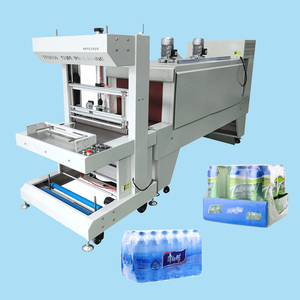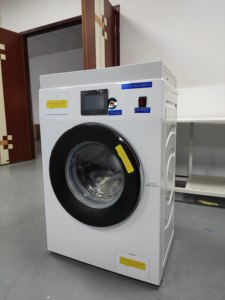
All categories
Featured selections
Trade Assurance
Buyer Central
Help Center
Get the app
Become a supplier

(67 products available)







































The types of automatic shrinkage testers are based on several factors, such as the material type and industry application. Below are some types commonly available in the market.
This instrument evaluates the dimensional changes of concrete exposed to varying temperatures. Users have observed that it enhances concrete monitoring to ensure structural integrity.
This device applies water, heat, and tension to fabric samples to measure shrinkage. Generally, users will found that it tests multiple samples concurrently, which increases efficiency.
This instrument evaluates the shrinkage characteristics of various iron samples. Moreover, it incorporates advanced temperature regulation for precise testing.
The machine determines the shrinkage rate of specific plastic materials during the manufacturing process. Also, it applies heat and measures dimensional changes.
Automatic shrinkage testers are widely applied across many industries. Each of these industries utilizes the testers uniquely based on their own needs and requirements.
The automatic shrinkage concrete tester is used to test concrete samples. This helps to ensure that structures made from concrete will remain stable even when the concrete shrinks.
A shrinkage tester fabric is commonly used in the textile industry. Many clothes artificially shrink prior to selling them. This reduces the future chances of the clothes further shrinking when the end user washes them.
Many manufacturing units practice using plastic materials in their operations. They use automatic plastic shrinkage testers for the plastic components they manufacture. This allows them to determine the amount of shrinkage these components will experience. With this information, they are able to adjust plastic formulations to obtain optimal shrinkage rates.
In metallurgy, iron shrinkage testers are used to evaluate different alloys. This helps to ensure that they only use alloys that will not deform or lose their structural integrity with time.
Shrinkage testers are generally common quality control instruments across many industries. This is because they allow businesses to evaluate materials prior to giving them the go-ahead for usage in production.
Automatic operation
One of the key defining features of these testers is automatic operation. The device automatically records results and even generates reports. This means users do not have to test samples manually and wait for the results. They can go it with their normal day-to-day activities as the tester works on its own.
Multiple sample testing
Automatic shrinkage testers have the capacity to test more than one sample at a go. Several fabric shrinkage testers can test up to 10 samples in one single batch. This greatly boosts efficiency and cuts down on testing time.
High precision
Automatic testers are equipped with advanced sensors. Therefore, they provide highly accurate and repeatable measurements of shrinkage. The degree of accuracy can go to as fine as 0.01mm. Also, this accuracy is important for many industries where minor changes in dimensions can have major consequences.
Real-time monitoring
They allow real-time monitoring of the test conditions. These conditions can be temperature and pressure. Real-time monitoring enables immediate detection of any deviations from the set parameters.
Robust construction
Most of these testers are designed to withstand harsh industrial conditions. Thus, normally they have durable housings made of premium quality materials, often with an IP rating for dust and water resistance.
Preparation of the sample
The user has to prepare the test sample before starting the testing process. For instance, if it is a fabric shrinkage tester, a user has to cut a specified size from the piece of fabric they want to use.
Loading the sample
Once a user prepares the sample, the next step is loading it onto the tester. Most machines have holders where users place their samples. The holders are also marked with measuring units to help with placement precision.
Setting parameters
The user loads the testing parameters onto the machine's control panel. The panel is normally designed with a user-friendly touchscreen interface to make this process easy. Users set temperature, pressure, and time based on the requirements for each specific test.
Starting the test
After setting all the parameters, users have to simply press start on the control panel. This is the part where the automatic feature comes into play. The machines will work to their own according to the parameters they were given. They will generate results and may also provide a report if it is a feature of the specific model.
Maintenance and repair
Automatic shrinkage testers need regular maintenance to continue functioning optimally. For instance, daily requirements include calibration and cleaning. Then, after some time, there is regular part replacement to retain effectiveness and efficiency.
Daily maintenance
The first daily maintenance of the fabric shrinkage tester is calibration. The user has to ensure that all the sensors on the machine are providing correct readings. Calibration involves running a 'known value' through the machine and checking the results against expectations. If the results don't match, the machine needs adjustment. The second daily maintenance is cleaning. The user has to wipe the external body of the machine with a clean wet cloth to get rid of dust. In the textile shrinkage tester, the users also have to clean the sample holders before placing new samples. After cleaning, users power on modern automatic shrinkage testers and begin using them. Before using an old automated machine, old machines might require users to restart them. Upon some machines, they will need a manual push of their start button after a long pause.
Weekly maintenance
Some machines have movable parts, including motors or belts. Users should conduct weekly checks on such parts. Machine experts recommend users lubricate these parts with the recommended lubricants. There is also internal cleaning during which users open parts of the machine to remove dust and debris. Users should do this weekly to prevent them from accumulating and affecting the machine's performance. Inspections help identify worn out or damaged parts early enough. During these inspections, users look close at the machine and also do a test run to see how it performs. If any parts are worn out, users should replace them immediately. However, they do not have to run to replace parts. They should use quality control information to guide them on when to replace specific parts.
Monthly maintenance
One of the major activities done during monthly maintenance is comprehensive calibration. Users should also take this opportunity to perform more extensive testing. This testing is done to determine if there is any need for parts replacement due to wear.
The following are some tips that sellers can utilize to ensure clients receive optimal-quality automatic shrinkage testers and enjoy great customer service.
Sellers should provide a variety of automatic shrinkage testers. Each of these testers should be manufactured with high-quality materials. Fabrics, for instance, are high-value products that need to be protected from damage. Damages to fabric products may lead to huge financial losses, so buyers seek testers that can precisely measure shrinkage without damaging the fabric. Manufacturers should ensure the machines have gentle handling mechanisms and accurate measurement tools. Using advanced technology like thermal or digital measurement tools can enhance accuracy.
Customer feedback about tester performance helps the seller know when to seek attention. Also, feedback showcases the tester's strengths and weaknesses. Savvy sellers use this information to generate insights and address product issues. For instance, if customers constantly complain about the machine overstressing fabric during the shrinkage test, it means it is time to develop a new model. It is internal feedback that can help with future innovations.
Sellers should also invest in after-sale services to improve customer satisfaction and, therefore, retention rates. A practical example of an after-sale service is delivery. If delivery takes longer than usual, customers are bound to be disappointed and may never shop from the seller again. Timely delivery with regular updates can help customers feel valued and appreciated. When the delivery is delayed, as long as there is communication with customers, they are likely to remain understanding.
Sellers should invest in good product packaging to protect the product from damage during shipping. Damage during shipping may completely ruin a product and even give the product bad reviews or an overall poor perception. During shipping, products can encounter adverse conditions, such as bad weather. Without proper packaging, the product is likely to be damaged, resulting in huge financial losses for both the buyer and seller.
A1. Automatic shrinkage testers function by utilizing machines to measure changes in sample dimensions. During testing, machines apply heat, water, and tension to fabric samples. They then measure the amount of shrinkage the fabric undergoes.
A2. Most manufacturers in the textile, construction, and plastics industries use automatic shrinkage testers. Also, quality-control departments in various industries buy these testers.
A3. Buyers of these testers can enjoy efficiency since most testers can handle multiple samples at a time. They also provide precise measurements and are functional even in harsh industrial environments.
A4. The key difference, however, is in operation. Manual testers require workers to take the measurements. Whereas automatic testers measure by themselves and even generate reports to save time and effort.
A5. The key components of these testers include measurement devices, sample holders, and heat sources. Other components are the control systems that automate the testing process.